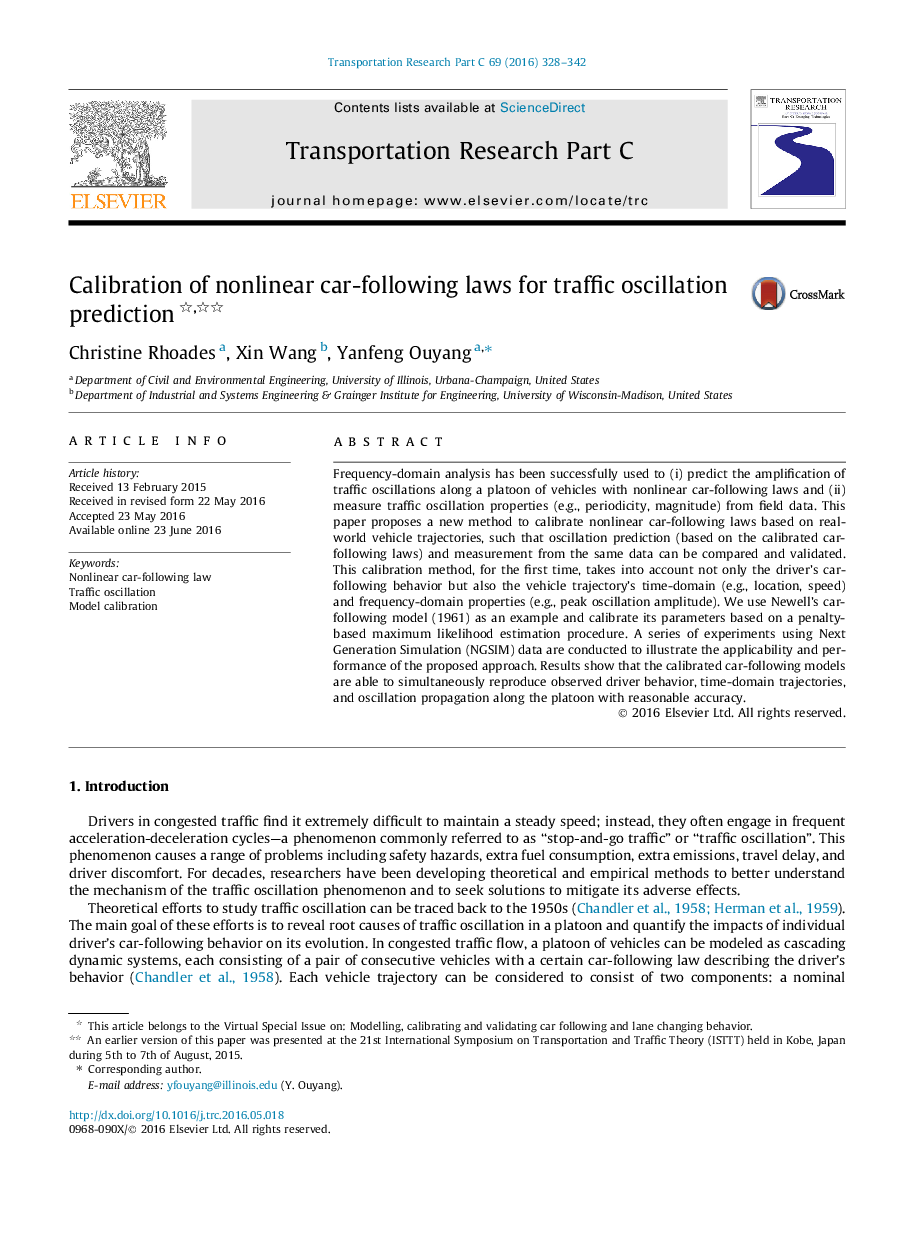| Article ID | Journal | Published Year | Pages | File Type |
|---|---|---|---|---|
| 524734 | Transportation Research Part C: Emerging Technologies | 2016 | 15 Pages |
•We propose an approach to calibrate nonlinear car-following laws from trajectories.•The calibration framework reproduces time- and frequency-domain properties.•We combine maximum likelihood estimation and simulated/analytical feedback.•A series of experiments with field data demonstrate satisfactory performance.
Frequency-domain analysis has been successfully used to (i) predict the amplification of traffic oscillations along a platoon of vehicles with nonlinear car-following laws and (ii) measure traffic oscillation properties (e.g., periodicity, magnitude) from field data. This paper proposes a new method to calibrate nonlinear car-following laws based on real-world vehicle trajectories, such that oscillation prediction (based on the calibrated car-following laws) and measurement from the same data can be compared and validated. This calibration method, for the first time, takes into account not only the driver’s car-following behavior but also the vehicle trajectory’s time-domain (e.g., location, speed) and frequency-domain properties (e.g., peak oscillation amplitude). We use Newell’s car-following model (1961) as an example and calibrate its parameters based on a penalty-based maximum likelihood estimation procedure. A series of experiments using Next Generation Simulation (NGSIM) data are conducted to illustrate the applicability and performance of the proposed approach. Results show that the calibrated car-following models are able to simultaneously reproduce observed driver behavior, time-domain trajectories, and oscillation propagation along the platoon with reasonable accuracy.
